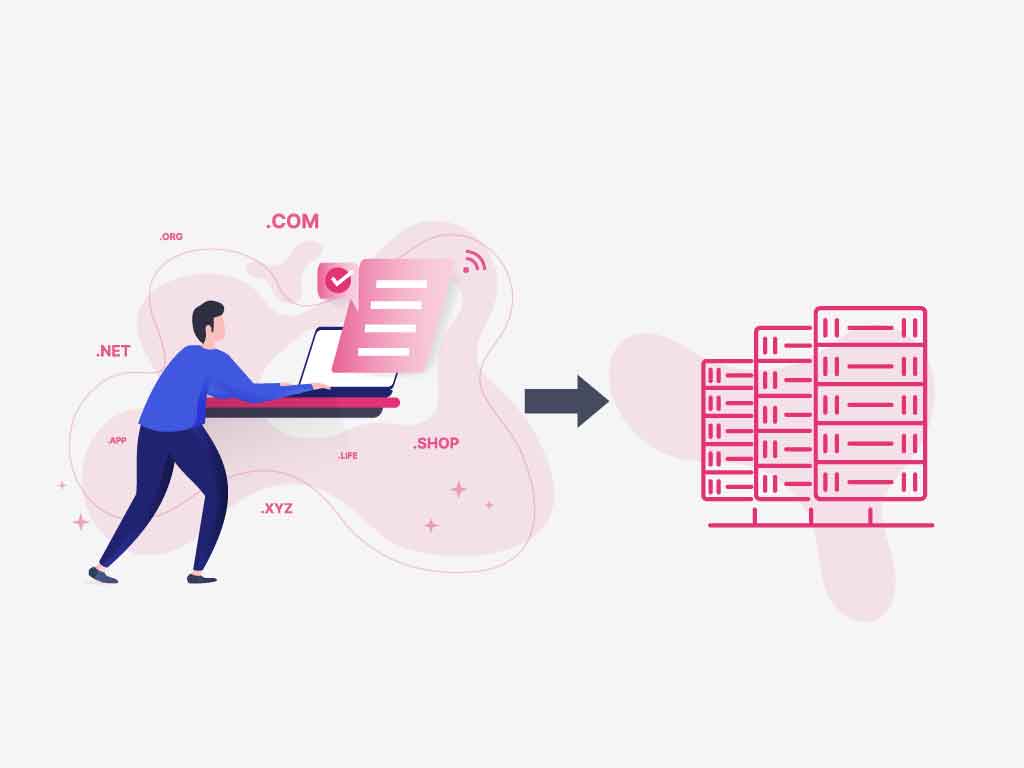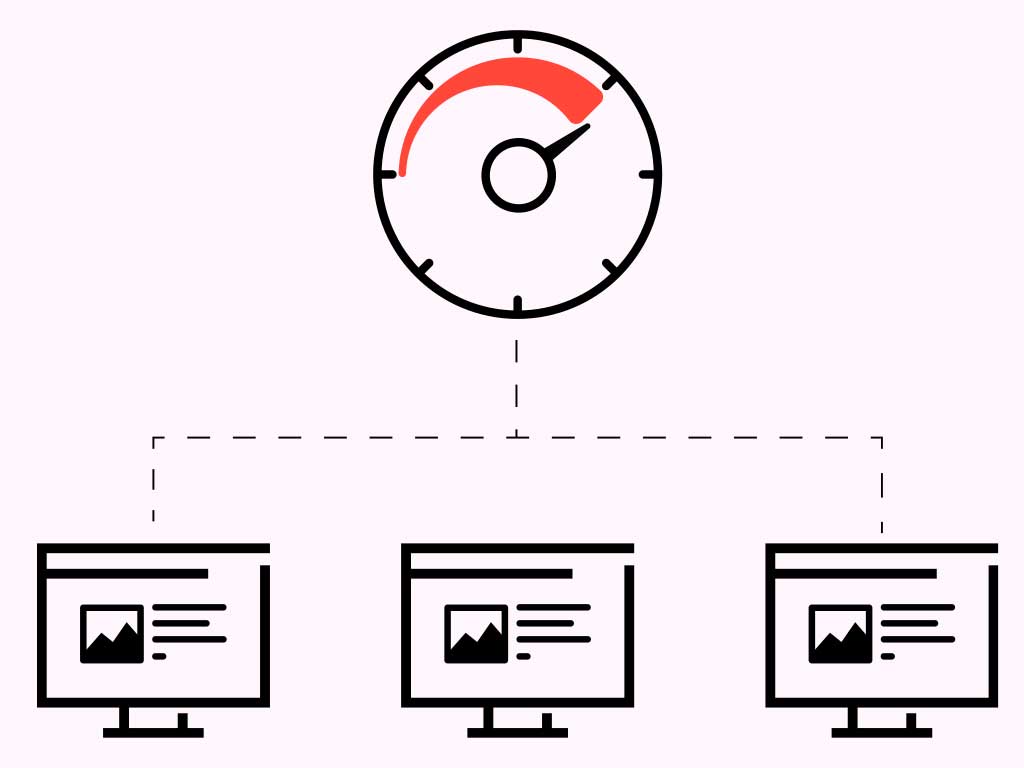Hosting multiple domains is as common as it is encouraged, because of all the benefits you can gain from it. But, given that no two websites are created equal, the reasons for hosting multiple domains on a shared hosting will differ from account to account. We’ll explore some of those factors, but let’s cover some of the basics before we dive in.
Table of Contents
What is shared hosting?
Shared hosting is simply when one server is shared among multiple users. Each user is allocated a set amount of the server’s resources, which contributes it being the cheapest web hosting option on the market. Users on a server are not familiar with each other, but everyone’s activities can easily impact another user’s website. Learn more about shared hosting here.
What is a domain?
A domain is actually your address on the World Wide Web. It’s operates just like your home address does, in that it tells people that this is where you live. So, when someone wants to visit your website, the domain is what they will type into the browser URL bar.
For example: monsterhost.com In this case, 'monsterhost' is the unique domain name and '.com' is the top-level domain extension.
Why setup multiple domains on your hosting plan?

Having more than one domain has become more popular and often times, more necessary than in previous times. But the reasons for hosting multiple domains are a wide and varying as the domain themselves. But, here the top four advantages for hosting more than one domain.
1. It provides security
Any website that is serious about security, both for its users and the site itself, should consider hosting multiple domains as it could prove to be very beneficial. By hosting multiple domains, you could drastically increase your platform’s defense against cyber-attacks and security threats. While one domain can be equipped to stave off these attacks, registering more than one domain could double your potential to tackle security threats.
When you have one domain name on your account, all the administrative functions that are connected to the email address revolve around the domain that’s visible to the public. But more website owners and managers are leaning towards and have opted to have a secondary domain, that’s registered, but not published and therefore not visible to members of the public. Not to worry though, as there are web hosting companies that automatically provide this type of protection, which also allows your host to give you, what’s referred to as a ‘parking spot’ while you shop for others.
For reference, a parking spot or parked domain is a pseudonym to your primary domain. So, if a user were to click on your parked domain, it would lead them right back to your primary domain, so it’s really you having more than one domain for the same website.
Just think of your route to work for example. There are several roads you can take, but they all lead to the same place – work.
2. To manage traffic

Users who want to know if one extension if performing better than another, often create mirror websites for each domain. Some web host users who want to know if one extension is working better than the other will create mirror sites for each domain as this allows them to track the traffic of each extension.
Tracking traffic becomes even easier if your web host allows a website builder, as this simplifies the process to set up the mirror sites.
3. Undertaking multiple projects
Multiple domains are required for multiple projects. So, if you have a number of projects on the web and they are under different domain names, it may be time to start considering multiple domains. By opting to host all your domains on the same account, you are simplifying the process, thus making it easier to manage all the websites operated by your users.
Users are also able to view stats and use a single control panel to operate the mail server for all the domains, when you have a primary host account. Additionally, having multiple domains on a single account lets users easily redirect emails from one domain to another.
4. To get ownership of internet extensions
If, for example, you own the .com internet extension, anyone, including cyber criminals or competitors, can get ownership of the .net extension, and this could be bad for business as you do not have control over what the other owner does.
As such, it is important that businesses use multiple domains to gain ownership over the .com and .net extensions to eliminate any problems, that not doing so could cause.
If you are a business with diverse audiences, have a niche website geared towards showcasing specialization or change your website or business name often, you should also consider hosting multiple domain names.
If your business operates in more than one country and uses multiple languages, hosting multiple domains is a must have.
Disadvantages of hosting multiple domains
Life is about balance, so to every pro there is a con. Here are some of the cons of hosting multiple domains.
- Expenses – The more sites you have to build and maintain, the more money you will need.
- Loss of power – There is a reason businesses tell you how long they’ve been in operation. It gives credibility. The same is true for your domain name. The longer you’ve been around, the more people will be inclined to trust your site. Changing your domain name, as is often the case, when hosting multiple domains, may prove more harmful than helpful. Separating your products and services on different sites could also weaken your power and influence, but that’s depended on your brand.
- Ranking – You may suffer a drop in ranking if you have multiple sites showing the same product or company. Some sites are even penalized for identical sites or for publishing the same content on their platforms, even if the information is in different languages. The key is to be creative and avoid duplicating your platforms.
How to add multiple domains
How do you actually go about adding multiple domains on your shared hosting account? Here a quick and easy how-to guide.
- Start by using the add-on domain name option. It can be found in your control panel.
- Next, you want to ensure that your domain name and your main hosting account are pointing to the same name servers by utilizing the parked domain name option located in your hosting control panel. If the domain and main account are not pointing to the same name server, the process will not be successful, so do not by pass it.
- After that, you will need to update the name servers for the new domain which makes sure that they are the same as the domain for the hosting account.
- Follow those steps and you should have multiple domains added, but should you run into any difficulty, do not hesitate to reach out to your web hosting provider. They will be more ready and willing to assist you set up your domain names.
Summary
Now you should be able to setup multiple domains on your hosting the quick and easy way. But if you don’t have the time or just want help getting it done, no worries. Almost all web host providers lets you set up more than one domain names.
If you opted for the basic package that your web host offers, you may be limited the number of domains you can register on your account. However, if you need more domains than your basic package provides, your web host will allow you to upgrade your hosting plan to suit your needs. Depending on the plan, users can add from two to an unlimited number of domains.






